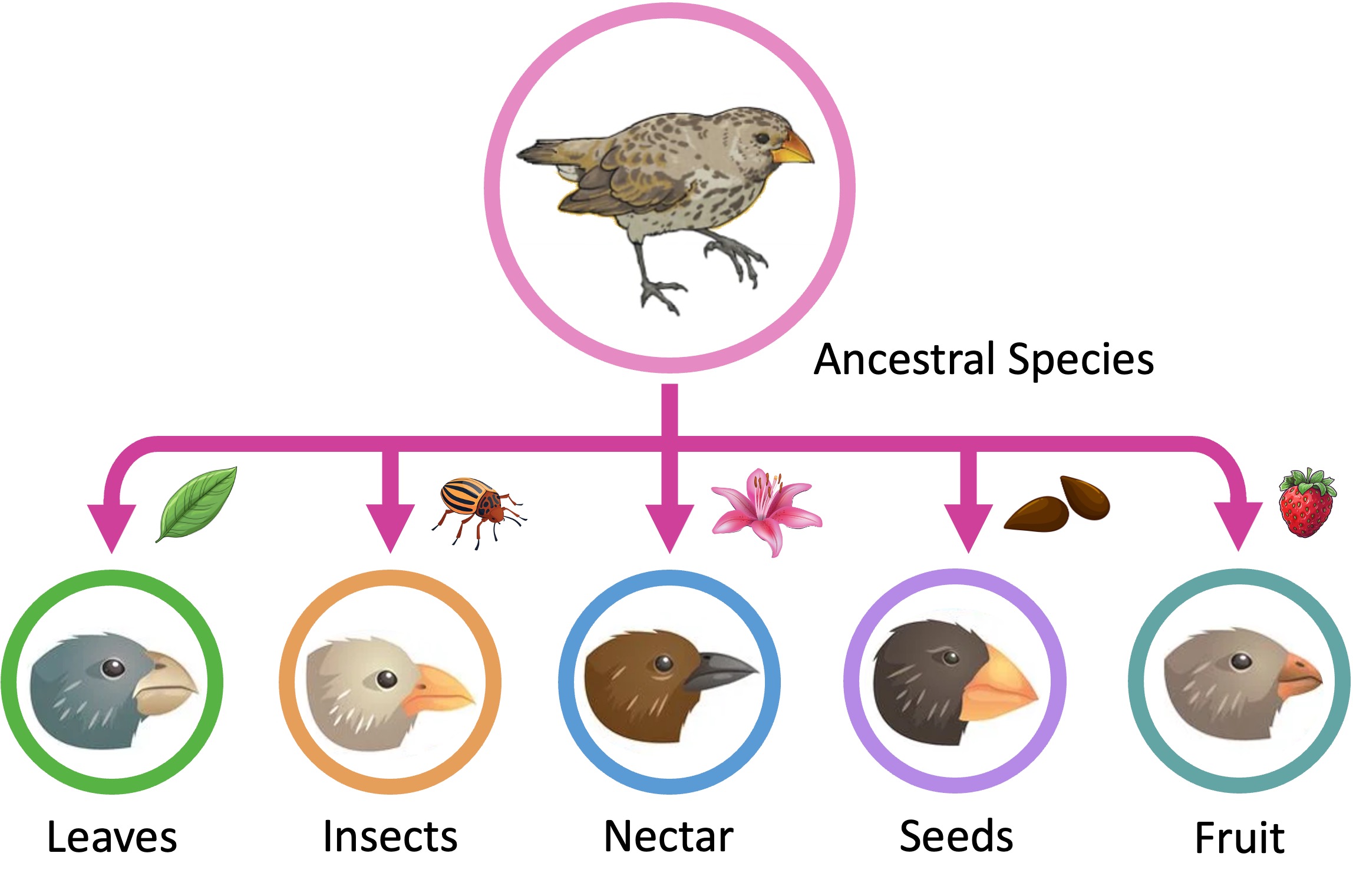

Adaptive Radiation
Adaptive radiation describes the rapid evolutionary diversification of a single ancestral line
-
It occurs when members of a single species occupy a variety of distinct niches with different environmental conditions
-
Consequently, members evolve different morphological features (adaptations) in response to the different selection pressures
Adaptive radiation allows closely related species to coexist without competing, thereby increasing biodiversity in ecosystems where there are vacant niches
-
An example of adaptive radiation can be seen in the variety of beak types seen in the finches of the Galapagos Islands
-
These finches have specialised beak shapes depending on their primary source of nutrition (e.g. seeds, insects, nuts, nectar)
Darwin’s Finches






